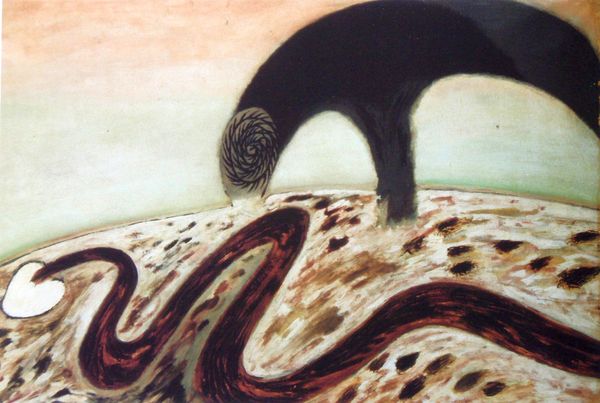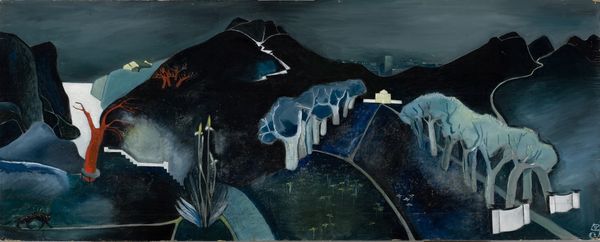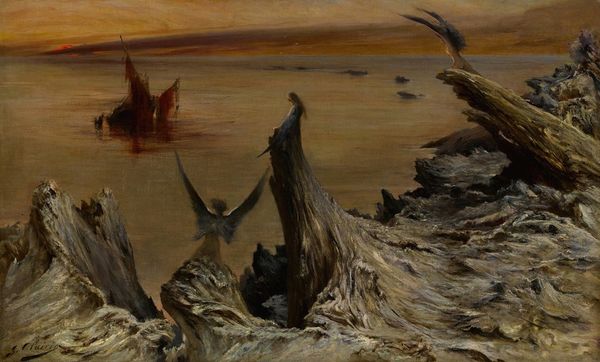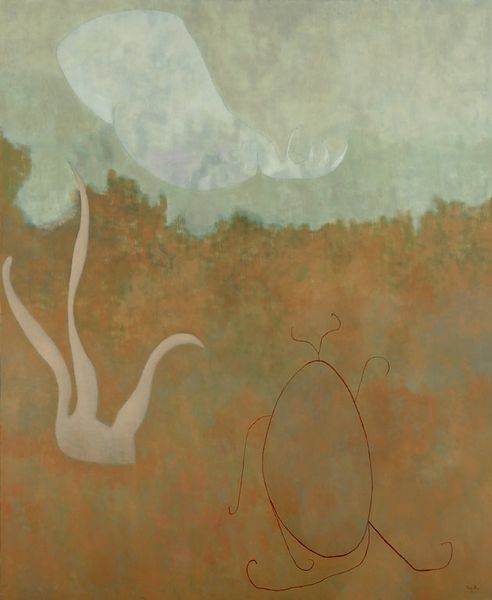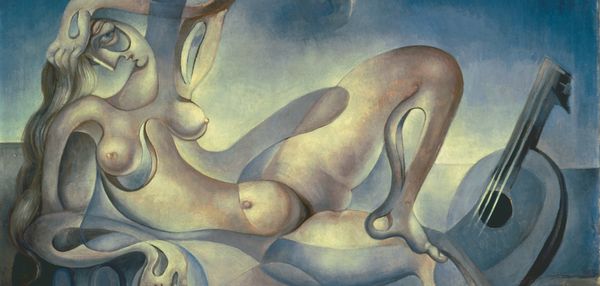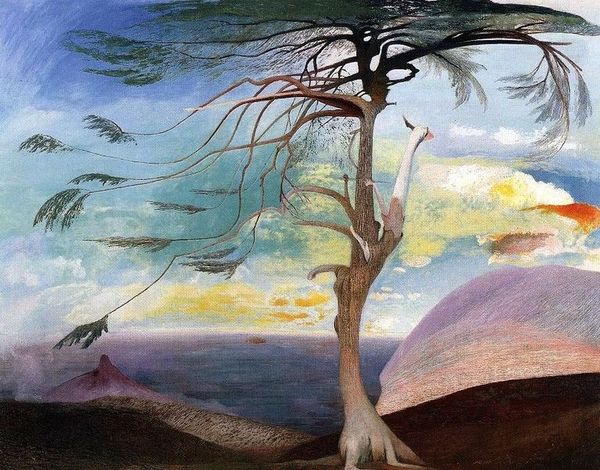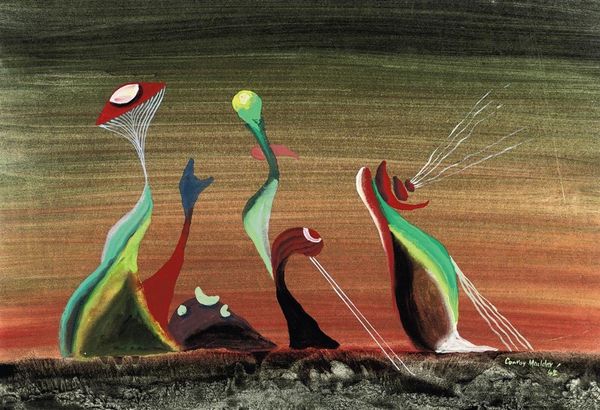
Copyright: Sidney Nolan,Fair Use
Curator: This unsettling yet compelling artwork is titled "Carcase in Swamp." Sidney Nolan rendered it with oil paint in 1955. What are your initial thoughts? Editor: Visually, the first thing that strikes me is the subdued palette – the earthy browns and blues create an atmosphere of decay and stagnation, beautifully amplified by the texture. It's a somber composition that speaks of something primordial. Curator: Yes, the subdued tones certainly enhance the painting's aura. It reminds me of primordial mythologies. This 'carcase,' I think, operates as a modern-day leviathan or chthonic deity, embodying hidden dread in the landscape. Nolan frequently employed mythological or legendary figures in his paintings as metaphors for psychological truths. Editor: Interesting point. Formally speaking, notice how Nolan uses stark vertical elements—those blackened post-like forms rising above the carcass. They create a sense of upward movement and yet are countered by the horizontality of the swamp, the dead, white animal figure. Curator: Those vertical elements resonate with symbols of mourning – think of totems or forgotten sentinels guarding the passage between realms. Perhaps the swamp environment alludes to liminality. Death here is not final but transitional, suggesting a complex and layered reality just beneath the surface. It touches upon a raw human vulnerability. Editor: Definitely. Speaking of surface, there is a clear contrast in brushwork; the sky and swamp are rendered loosely, even blurred, contrasting with the relative smoothness of the animal carcase, drawing the viewer’s focus in. It gives it a tangible weight and immediacy amidst the ethereal decay. Curator: I find the carcase to be less literal and more emblematic. Its blankness is unnerving and mirrors humanity confronting mortality without comforting narratives. I imagine it echoing our anxieties toward death—a reflection on the cyclical relationship between creation and annihilation, a visual poem on what's lost. Editor: Indeed, a striking example of expressionism. This canvas, with its bleak subject, prompts reflections on our ecological footprint on the natural world, still haunting us even 70 years on. Curator: It is precisely the work’s visual enigma and its enduring capacity to tap into shared cultural memories that continues to captivate me.
Comments
No comments
Be the first to comment and join the conversation on the ultimate creative platform.

